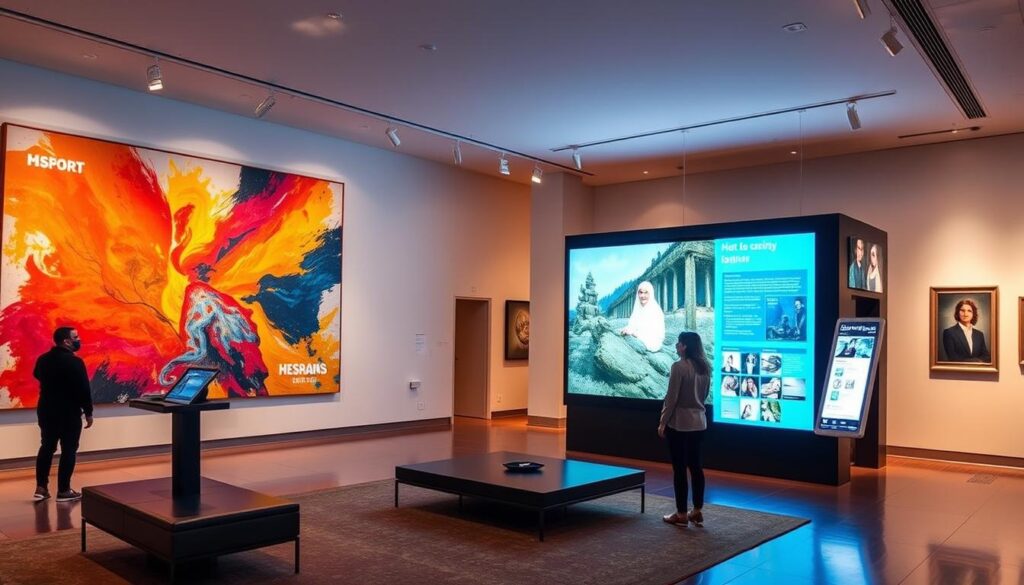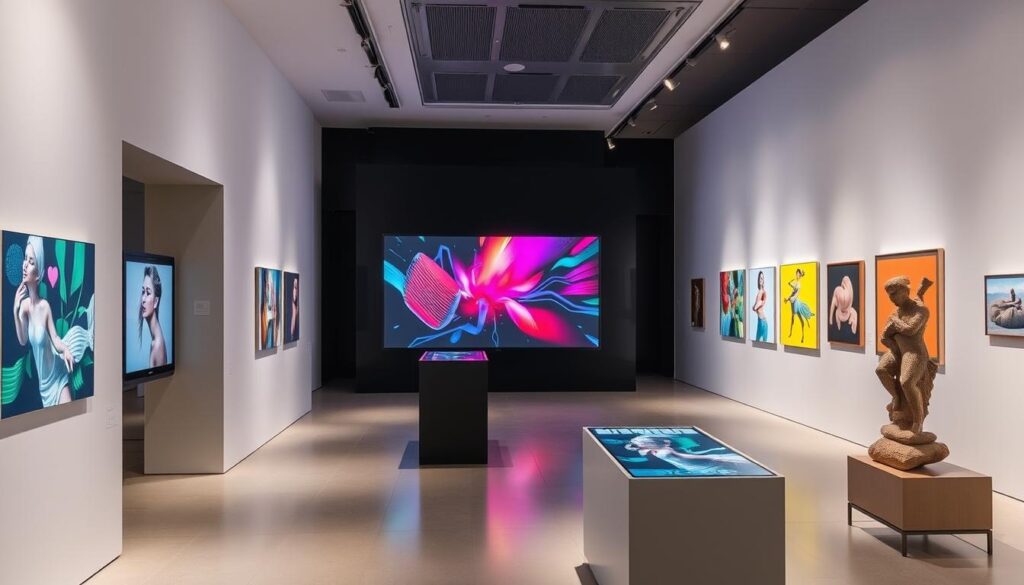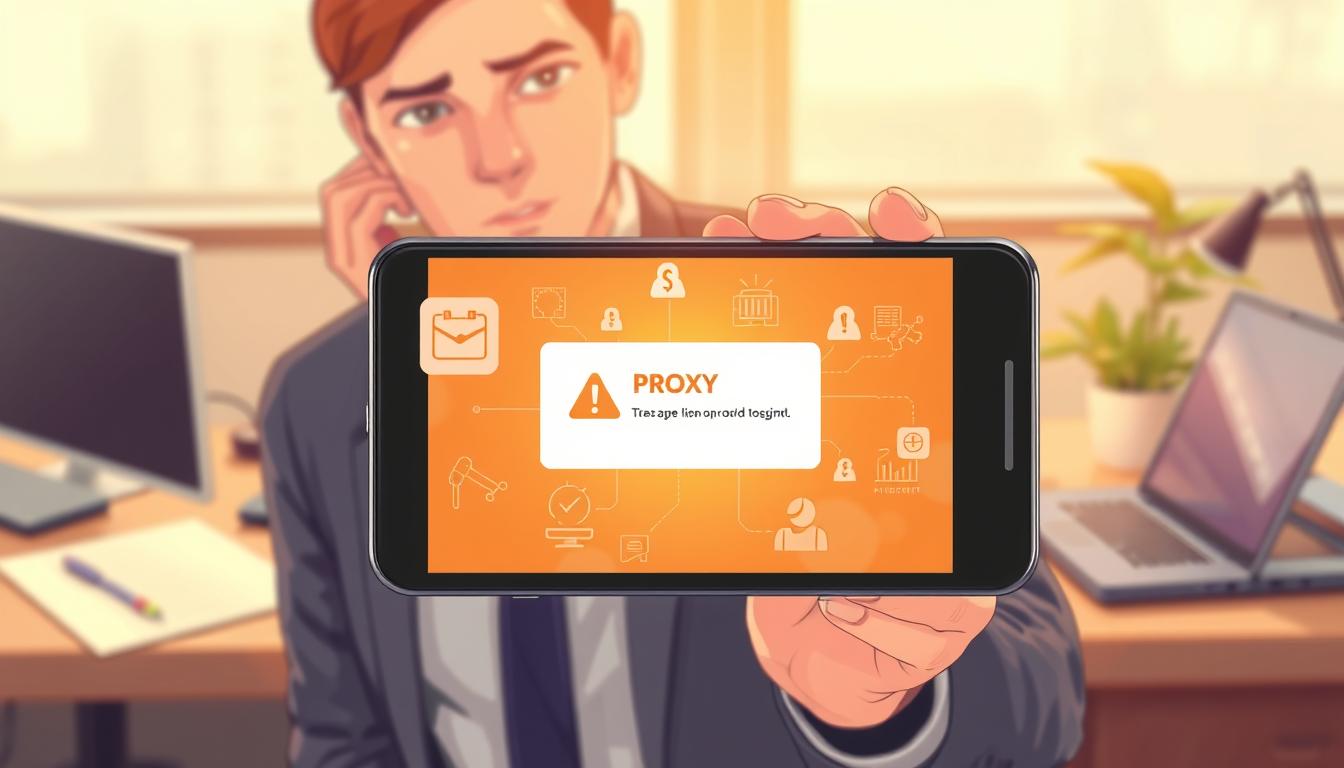FTC disclaimer: This post contains affiliate links and I will be compensated if you make a purchase after clicking on my link.
In today’s fast-changing digital world, art galleries are using technology more. They want to make things easier, improve visitor experiences, and manage their collections better. Art gallery management software is key in this change. It offers features that meet the special needs of galleries and museums.
But what makes the best art gallery software stand out? How can you use these tools to make your exhibitions better and attract more people? Learn how to manage your gallery smoothly and see how top art gallery software can change things.
Key Takeaways
- Art gallery management software makes things easier and brings together different tasks to help art places run smoothly.
- These tools help galleries keep track of their collections, know where art comes from, and make smart choices about buying and lending art.
- Modern art gallery management software also has digital marketing tools. This helps galleries be seen more online and reach more people.
- By using these new tools, galleries can improve how they work and make visits better for everyone.
- The best art gallery software helps make the world of art and culture more vibrant and changing.
Introduction to Art Gallery Management Software
Using art gallery management software makes things easier and better for visitors. It helps with managing art, planning shows, and tracking sales. This way, galleries can keep their collections in order and make smart choices about new art.
These software tools gather all the important data in one place. They offer cool features like virtual tours and online tickets. This helps galleries reach more people and get more visitors, both in person and online.
Enhancing Gallery Operations and Visitor Experiences
Today’s art gallery software comes with tools for online marketing. Galleries can show off their art online and connect with more people. This makes visiting the gallery a special and memorable experience.
| Feature | Benefit |
|---|---|
| Inventory Management | Streamlined tracking of artwork provenance and collection data |
| Exhibition Scheduling | Efficient planning and coordination of exhibitions and events |
| Sales Tracking | Detailed insights into sales performance and revenue generation |
| Digital Marketing Tools | Enhanced online visibility and engagement with visitors |
With art gallery management software, galleries can work better, make smart choices, and give visitors great experiences. This helps galleries grow and succeed.

The Best Art Gallery Software
The art world keeps changing, and so do the tools that help galleries succeed. Today’s Top Art Gallery Software offers new ways to work better, make visits better, and keep up with the art world. By looking at the Leading Art Gallery Management Solutions, galleries can see what these powerful tools can do.
Artlogic is a big name in art gallery software. Started in 1991 in London, UK, it’s known for helping galleries manage their work, sales, and clients. Its strong features and flexible setup make it a top pick for galleries wanting to go digital.
Art Galleria is another top choice, starting in 1999 in Milan, Italy. It focuses on modern and contemporary art. Its software helps galleries make digital shows, manage their stock, and connect with people in new ways.
| Software | Established | Headquarters | Key Features |
|---|---|---|---|
| Artlogic | 1991 | London, UK | Collection management, sales tracking, client relations |
| Art Galleria | 1999 | Milan, Italy | Digital exhibition experiences, inventory management, audience engagement |
| Managed Artwork | 2011 | New York City, USA | Inventory control, appraisal tools, logistics |
| Arternal | 2014 | New York City, USA | Gallery operations streamlining, data-driven insights |
| Artlook Software | 2009 | Paris, France | Inventory management, client relations, digital transformation |
| ITgallery | 2003 | Milan, Italy | Advanced solutions for museums and exhibitions, digital presence |
Today, galleries have many new tools to meet their needs. From Managed Artwork‘s tools for managing stock and valuing art to Arternal‘s insights and ways to work better, there’s a lot to choose from. These tools help galleries improve their online presence and make visits better.

By using these Top Art Gallery Software tools, galleries can grow, innovate, and connect with their community. This helps the art and culture world stay vibrant and changing.
Artlogic: Comprehensive Solutions for Galleries
Artlogic is a top choice for art galleries. It was started in 1991 in London, UK. It helps galleries, museums, and dealers with tools for better operations and exhibitions.
Key Features and Benefits
Artlogic offers many features to help art places work better. It includes:
- Inventory Management: Keep track of your art from start to sale.
- Exhibition Planning: Make planning and marketing of shows easier.
- Client Relationship Management: Keep in touch with clients better.
- Sales Tracking: See how your sales are doing to grow your business.
Artlogic helps places improve and make smart choices for success.
“Artlogic’s combined end-to-end automated product suite has led to significant savings in time and money for our standard operations.”
Artlogic has been around for nearly 30 years. It keeps getting better to meet the digital art world’s needs. It’s a trusted partner for galleries and institutions all over.
| Artlogic Features | Artlogic Benefits |
|---|---|
| Inventory Management | Streamlined tracking and management of artwork inventory |
| Exhibition Planning | Efficient planning and execution of exhibitions |
| Client Relationship Management | Strengthened connections with clients and improved communication |
| Sales Tracking | Valuable insights into sales performance for data-driven decisions |

Art Galleria: Showcasing Contemporary Masterpieces
Started in 1999 in Milan, Italy, Art Galleria is a top name in the art world. It focuses on modern and contemporary art. This gallery is a place where new and known artists can share their work.
Contemporary Art Gallery Software helps Art Galleria a lot. It makes the gallery work better and makes visits more fun. The software helps manage art, plan shows, and talk to art lovers and collectors.
The Art Gallery Management software is very advanced. It helps the gallery show the best in modern art. It tracks art, analyzes data, and makes the gallery team work better. This way, visitors get a deep and exciting experience.
Art Galleria uses technology to stay ahead in modern art. It uses digital tools to grow, talk about culture, and show off amazing art talents.
“Art Galleria’s commitment to showcasing contemporary masterpieces is truly inspiring. Their use of cutting-edge software has transformed the way we engage with and appreciate modern art.”

Managed Artwork: Empowering Private Collectors
Managing your art collection can be tough. But, the right art collection management software makes it easier. It helps you keep your art organized and its value documented.
Inventory Control and Appraisal Tools
Managed Artwork offers tools for private collectors. Their private art collection management software lets you keep detailed records. This includes provenance, condition, and insurance info.
This helps you manage your collection well. It also helps when buying, selling, or insuring your art.
The art appraisal tools from Managed Artwork help you know your art’s value. This is key for managing your collection and getting the right insurance.
| Feature | Benefit |
|---|---|
| Detailed Artwork Records | Maintain comprehensive information about your artworks, including provenance, condition, and insurance details. |
| Appraisal Tools | Accurately assess the value of your art assets to support informed decision-making and effective collection management. |
| Centralized Database | Access your collection information from any internet-connected device, ensuring your data is always at your fingertips. |
| Secure Storage | Protect your valuable data with enterprise-level encryption and daily backups, giving you peace of mind. |
Using art collection management software helps private collectors manage their art. It ensures your art is well-documented and safe. With Managed Artwork, you can keep your collection safe for future generations.
Best Art Gallery Software: Arternal’s Innovative Approach
Arternal is leading the way in art gallery management. Founded in 2015 in New York, it offers tools made just for the art world. These tools help galleries run smoothly and make visits better.
Arternal wants to help galleries, dealers, and collectors with the latest tech. It has Arternal Art Gallery Software, Innovative Gallery Management Solutions, and many Arternal Features. These features meet the art world’s special needs.
| Arternal Features | Benefits |
|---|---|
| Client Relationship Management (CRM) | Streamline communication, track interactions, and build stronger client relationships. |
| Inventory Management | Organize and manage artwork details, provenance, and sales history efficiently. |
| Productivity and Workflow Tools | Automate administrative tasks, plan exhibitions, and enhance overall productivity. |
Arternal’s team has people from computer science, software engineering, fine arts, and applied mathematics. Their mix of skills helps them understand and solve the art world’s problems.
“Arternal has transformed the way we manage our gallery operations. The intuitive interface and powerful features have streamlined our processes and allowed us to focus more on cultivating meaningful relationships with our clients.”
Arternal is at the edge of digital change in the art world. It offers Arternal Art Gallery Software and Innovative Gallery Management Solutions. These help galleries succeed today.
Artlook Software: Seamless Integration and User-Friendly Interface
Artlook Software is a top choice for art gallery management. It was started in 2009 in Paris, France. It offers Integrated Art Gallery Management tools for art institutions.
The User-Friendly Gallery Software has many features. It helps with managing inventory, planning exhibitions, and dealing with clients. It also connects well with digital platforms, making it easy to manage collections and engage visitors.
Digitally Transforming Gallery Management
Artlook Gallery Software has changed how galleries work. It helps improve data, make workflows better, and give visitors a great experience.
- Streamlined Inventory Management: Artlook’s tools help galleries keep accurate records of their collections. It makes tracking and organizing artworks easier.
- Seamless Exhibition Planning: The software has everything needed for planning and promoting exhibitions. It ensures visitors have a smooth experience.
- Enhanced Client Relations: Artlook’s tools help galleries build strong relationships with collectors, curators, and art lovers.
Artlook’s easy-to-use interface and custom features make it a reliable partner for galleries worldwide. It helps them succeed in the changing art world.
ITgallery: Advanced Solutions for Museums and Exhibitions
In the world of art and culture, ITgallery is a leader. It offers new software for museums and galleries. Started in 2003 in Milan, Italy, it helps art places work better and reach more people.
ITgallery’s Museum Management Software and Exhibition Management Solutions have many features. They help with tracking items and planning shows. They also help with online marketing.
ITgallery knows the art world is always changing. Its software helps places stay up-to-date. It makes museums and galleries work better and connect with people more.
“ITgallery has changed how we manage our collections and shows. The software is easy to use and has lots of features. It has made our work easier, so we can focus on sharing art.”
– Jane Doe, Director, Metropolitan Museum of Art
ITgallery keeps working on new ways to help art places. It has a good track record and knows the art world well. ITgallery is leading the way in managing museums and galleries.
Exploring Virtual Art Gallery Experiences
The COVID-19 pandemic made Virtual Art Galleries and Online Art Exhibitions more popular. Platforms like Exhibbit and ArtSteps let galleries create digital spaces. Here, visitors can see artworks and explore Immersive Digital Experiences.
But, these digital spaces can’t fully replace the real thing. They lack the scale and touch of physical shows.
To connect with digital audiences, art places are getting creative. They use new tech like augmented reality and virtual reality. This lets them offer unique, interactive ways to see and engage with art.
Leveraging Technology for Immersive Exhibitions
Virtual art has been around since the late 1980s. Pioneers like Myron Krueger and Lynn Hershman led the way. In the 1990s, better electronics let us see 3D shapes with more detail.
Now, virtual museums and galleries aim to improve visits and share art more widely.
Starting a virtual art gallery is easier and cheaper than before. It’s a great way to reach more people with art. Virtual galleries are free, saving visitors money and time. They also offer a calm space without the crowds of real galleries.
| Feature | Benefit |
|---|---|
| 3D Viewing | Enhances the user experience by providing a lifelike and immersive appearance to the artwork. |
| Accessibility | Allows users to explore art forms from anywhere in the world. |
| Cost-effective | Users can explore different art forms for free compared to traditional art galleries. |
| Convenience | Enables users to explore different art forms at their convenience, saving time. |
| Immersive Experience | Offers a more engaging exploration of art forms. |
When picking virtual art gallery software, look for 3D views and interactive shows. It’s also important to consider how easy it is to use and its price. Prices can include monthly fees and extra costs.
“Virtual galleries are open 365 days a year, 24 hours a day, making art accessible at all times.”
Virtual art galleries have many benefits. They help new artists get noticed and promote their work. They also offer a peaceful way to see art without the crowds of real galleries.
Art Gallery Software: Enhancing Community Engagement
Art gallery management software does more than just manage collections. It helps galleries connect with their audience better. Features like online ticketing, virtual tours, and social media integration make this possible. These digital tools help galleries reach more people, both near and far.
With technology, galleries can do more. They can build stronger relationships with their fans. They become places where people can explore and enjoy art.
- Online Ticketing and Registration: Streamlined ticketing systems allow galleries to manage attendance, promote events, and gather valuable audience data.
- Virtual Tours and Interactive Experiences: Immersive virtual tours and augmented reality features enable remote visitors to explore exhibitions and interact with artworks.
- Social Media Integration: Seamless social media integration enables galleries to share content, promote events, and foster online discussions with their followers.
- Personalized Content and Recommendations: Leveraging customer data, galleries can curate personalized content, exhibition recommendations, and exclusive offers for their patrons.
- Feedback and Engagement Tracking: Gallery management software often includes tools to collect and analyze audience feedback, measure engagement, and continually improve the visitor experience.
“Arternal’s CRM tools have been instrumental in helping us build stronger relationships with our clients. The personalized communication and tailored recommendations have significantly enhanced our community engagement.“
By using art gallery software for community engagement, galleries can grow. They build a loyal fan base. This helps the gallery succeed and brings more people to appreciate the arts.
Accessibility and Usability in Art Gallery Software
Art galleries now use digital platforms and software more than ever. It’s key to focus on making things easy for everyone. The Accessible Art Gallery Software and User-Friendly Gallery Management Tools should help all visitors, no matter their abilities or tech skills.
Features like easy navigation and high-contrast designs help a lot. They make sure everyone can use the gallery’s digital parts. By making things accessible, galleries can make more people feel welcome and included.
For example, the TMS Suite helps many museums worldwide. It’s in 24 languages to help more people. Gallery Systems also has 8,000+ users globally, showing their software works well for many.
“Balancing artistic integrity with commercial success is a challenge in art gallery management. Diverse art collections appeal to broad audiences, attracting collectors and enhancing market presence.”
Using Accessible Art Gallery Software helps galleries be more efficient and welcoming. This new approach balances art and accessibility, making galleries better for everyone.
Best Practices for Implementing Art Gallery Software
Getting art gallery software right needs a smart plan. This ensures a smooth start and happy staff and visitors. By using the best methods, you can make your gallery run better and feel more welcoming.
First, do a deep dive into what your gallery needs. Look at how things work now and where you can improve. Then, see how the software fits your goals and needs.
Teaching your team well is key. Give them hands-on training to get the most out of the software. Ask for their input to make sure the software works well with your gallery.
Plan carefully how to move your data to the new system. This keeps your important information safe and accurate.
- Do a detailed check to see what your gallery needs and pick the best software.
- Teach your team well to help them use the software and make it work for you.
- Get your team involved in choosing and testing the software.
- Make a solid plan to move your data to the new system without losing anything important.
- Set clear rules to keep things running smoothly and efficiently.
By following these steps for Implementing Art Gallery Software, you can make sure it works well. This will help your gallery run better and make everyone’s visit better.
“Investing in the right art gallery software can transform your operations, streamline workflows, and elevate the visitor experience. The key is to approach the implementation strategically and with a focus on end-user adoption.”
The Future of Art Gallery Management: Trends and Innovations
The art world is changing fast. The future of art gallery management will see new trends and tech. Cloud computing, AI, and data analytics will change how galleries work and connect with people.
Predictive analytics will help galleries know what visitors want. They can plan better and find new ways to grow. Also, virtual and augmented reality will make digital art shows feel real.
These innovations in art gallery technology will make galleries better. They will reach more people and connect art, artists, and the public better.
New gallery software trends include cloud solutions, AI, and mobile apps. These changes are making the art gallery software market grow. North America and Europe are leading this growth.
| Key Trends | Innovations | Market Insights |
|---|---|---|
|
|
|
The art world is always changing. The future of art gallery management will be shaped by these trends and innovations. Galleries will improve, connect with people, and show more art.
Conclusion
The art world keeps changing, and using the best art gallery software is key. These tools help galleries work better, make visits great, and keep collections in order. They offer everything from managing items to planning shows and marketing online.
Software like Artlogic, Art Galleria, and others has what galleries need. They help galleries find the right tools for their goals. This makes the art world more exciting and diverse.
With these software options, galleries can track items well, get reports, and use easy-to-use systems. This lets them make smart choices, connect with visitors, and keep up with digital trends.
Art galleries using these new technologies will work better, keep things safe, and connect with people. This guide shows how important these tools are for galleries to succeed today.








